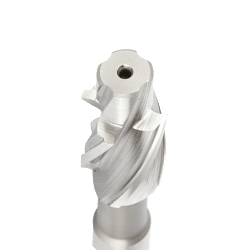< Integral cutting tools Counterbores
In the world of machine shops, efficiency and precision are key elements in guaranteeing the quality of the end product. Among the tools that play a crucial role in this context, laminators stand out for their ability to finish and refine metal surfaces. This article will explore in detail what laminators are, what they are used for, how they are used and what advantages they offer, also answering frequently asked questions about this essential tool.
Introduction to laminators
Rollers are mechanical tools used primarily for machining metal surfaces. Their main function is to remove small amounts of material to obtain a smooth and uniform surface. This process is essential in many industrial applications, where precision and surface finish are critical to the function and durability of components.
Operation and use of laminators
The operating principle of laminators is based on the cutting action of a blade or abrasive tool that moves along the surface of the workpiece and removes thin layers of material. This process can be performed manually or with the aid of automatic machines, depending on the specific requirements of the application.
Rollers are used in a wide range of industries, including automotive, aerospace, machinery manufacturing and many others. In each of these sectors, the ability to achieve perfectly smooth and imperfection-free surfaces is crucial to ensuring the reliability and performance of components.
Advantages of using laminators
The use of laminators offers numerous advantages, including:
1. Precision and quality of finish: Sanding machines enable extremely smooth and precise surfaces, minimising imperfections that could compromise component performance.
2. Production efficiency: Thanks to their ability to quickly remove small amounts of material, laminators help reduce machining time, increasing the overall efficiency of the production process.
3. Versatility: Rollers can be used on a wide range of materials, including ferrous and non-ferrous metals, special alloys and composite materials, making them an extremely versatile tool.
4. Cost reduction: The efficient use of laminators can help reduce production costs by decreasing processing time and reducing scrap.
Types of laminators and specific applications
There are different types of laminators, each designed for specific applications. Among the most common are:
- Manual laminators: Ideal for precision work on small surfaces or for finishing operations where greater operator sensitivity and control is required.
- Automatic laminators: Used in large-scale industrial applications where large volumes of material need to be processed with high precision and repeatability.
- Computer numerically controlled (CNC) laminators: These advanced tools offer precise and programmable control of the machining process, allowing high quality results to be achieved with minimal operator intervention.
Frequently asked questions about laminators
1. What is the difference between a manual and an automatic laminator?
The main difference lies in the way the cutting operation is performed. In manual laminators, the operator directly controls the movement of the tool, whereas in automatic laminators the process is controlled by a machine, which can be programmed to perform complex operations with high precision.
2. What materials can be processed with laminators?
Rollers are suitable for a wide range of materials, including steel, aluminium, copper, brass and special alloys. The choice of lamator type and tool depends on the specific characteristics of the material to be processed.
3. How do I choose the right lamator for a specific application?
The choice of lamator depends on several factors, including the type of material to be machined, the size and shape of the workpiece, the level of precision required, and the production volume. It is important to carefully evaluate these variables in order to select the most suitable tool for your needs.
4. What are the main safety considerations when using laminating machines?
The use of laminators requires the adoption of appropriate safety measures to protect the operator and ensure a safe working environment. These measures include the use of personal protective equipment, such as goggles and gloves, and the proper maintenance of tools to prevent malfunctions.
Conclusions
Rollers are an indispensable tool for machine shops and industries that require precision machining. Their ability to improve surface quality and optimise production processes makes them an ideal choice for a wide range of applications. Understanding the features and potential of laminating machines is essential to fully exploit the advantages they offer, while ensuring safe and efficient operations.
Read More Read Less 






















